
Regeneration Through Innovation
In order to revolutionize our food system we must reorient our priorities and time horizon to consider long-term impact and growth. In the face of a changing climate, we must rebuild soil health, restore habitats, rejuvenate ecosystems, and revitalize agricultural communities.
To do this, we need to harness the power of Regeneration Through Innovation.
George Washington Carver as Inspiration
An often-overlooked historical figure, George Washington Carver helped pave the way for regenerative agriculture. Carver was born into slavery just before the Emancipation Proclamation was signed in 1865. He was the first black student at Iowa State Agricultural College, then later received a master's degree in soil science. Carver dedicated his life to studying how peanuts and other legumes fix nitrogen to bolster soil health. He is credited with coining the term “crop rotation” - introducing different plant types into the soil to increase biological diversity and reduce inputs.
Carver returned to the South after teaching for many years and discovered that the land appropriated for black farmers was degraded due to the mono-cropping of cotton and tobacco. He knew the solution was to grow more diverse crops on the land (like peanuts), but Carver had a market problem: No one wanted to eat peanuts.
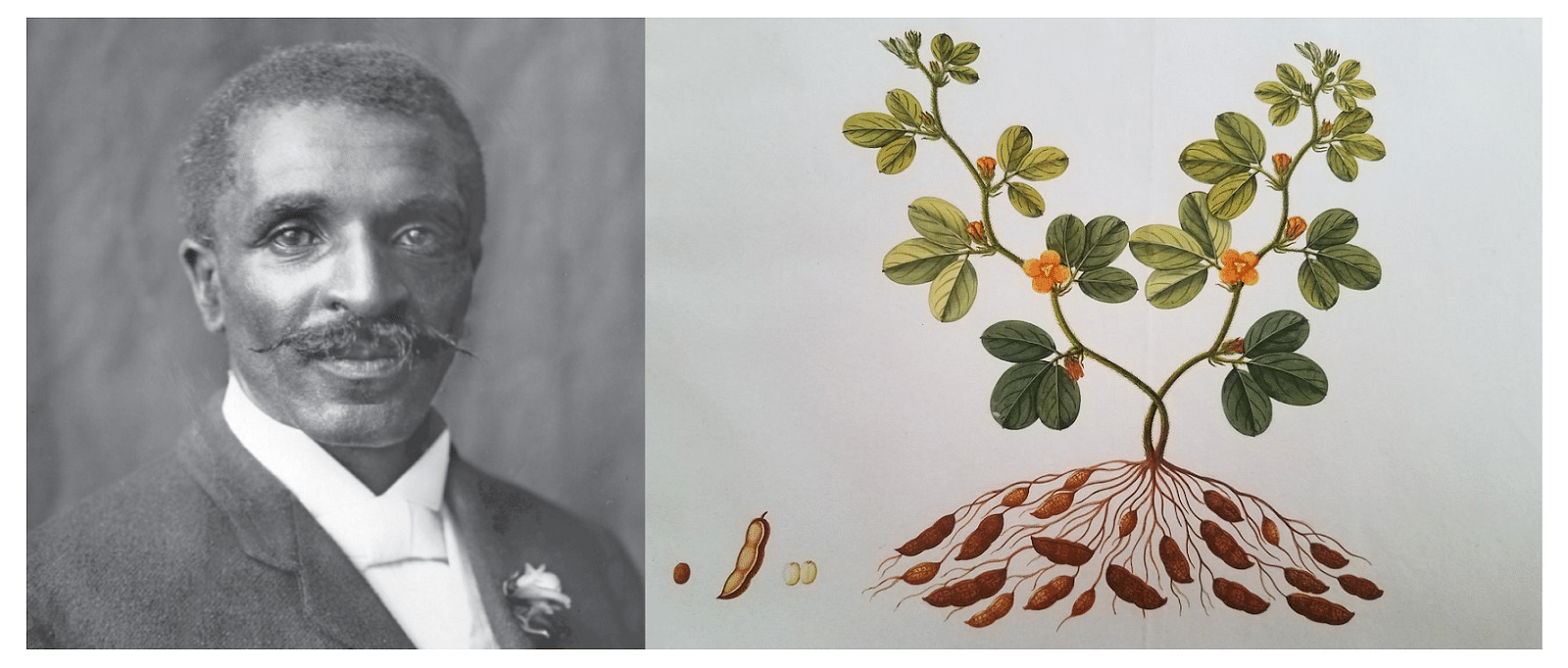
People, Planet and Palate Framework
Carver realized that the outcomes he wanted to see - restoration of the land and economic vitality for his community - could be achieved through the invention of delicious foods that drove market demand.
Taking inspiration from Carver, I refer to this as the "People, Planet and Palate Framework."
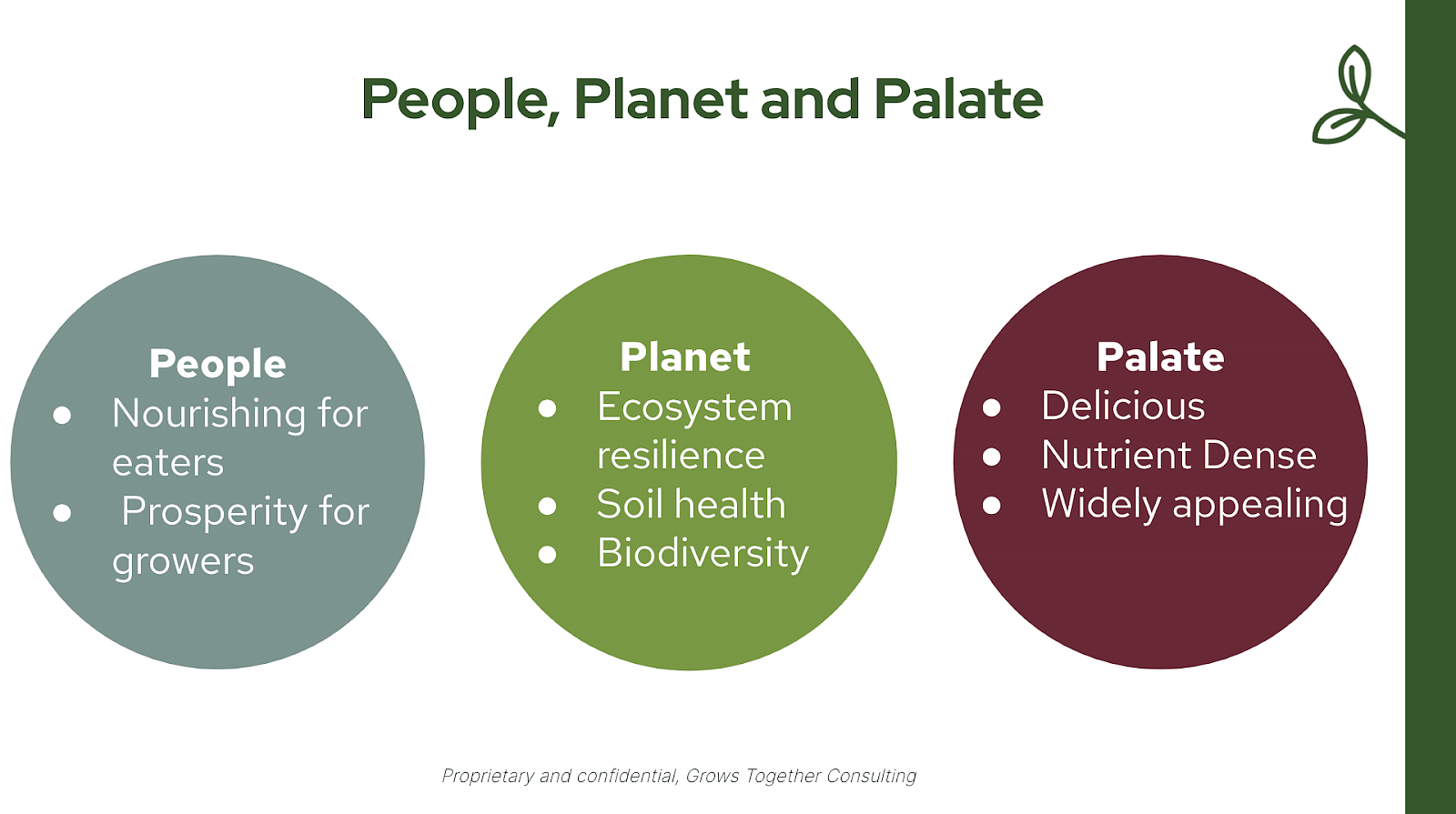
Carver’s epiphany led him to publish over 300 uses for the peanut, including the commercialization of peanut butter. By considering outcomes to people, planet and palate, he impacted positive change for his community and the land through a delicious snack food.
And here’s the best part: We can too.
Regeneration happens at the intersection of beneficial outcomes to people, planet and palate. Delicious, widely appealing foods come from resilient biodiverse ecosystems with healthy soil where farming communities thrive.
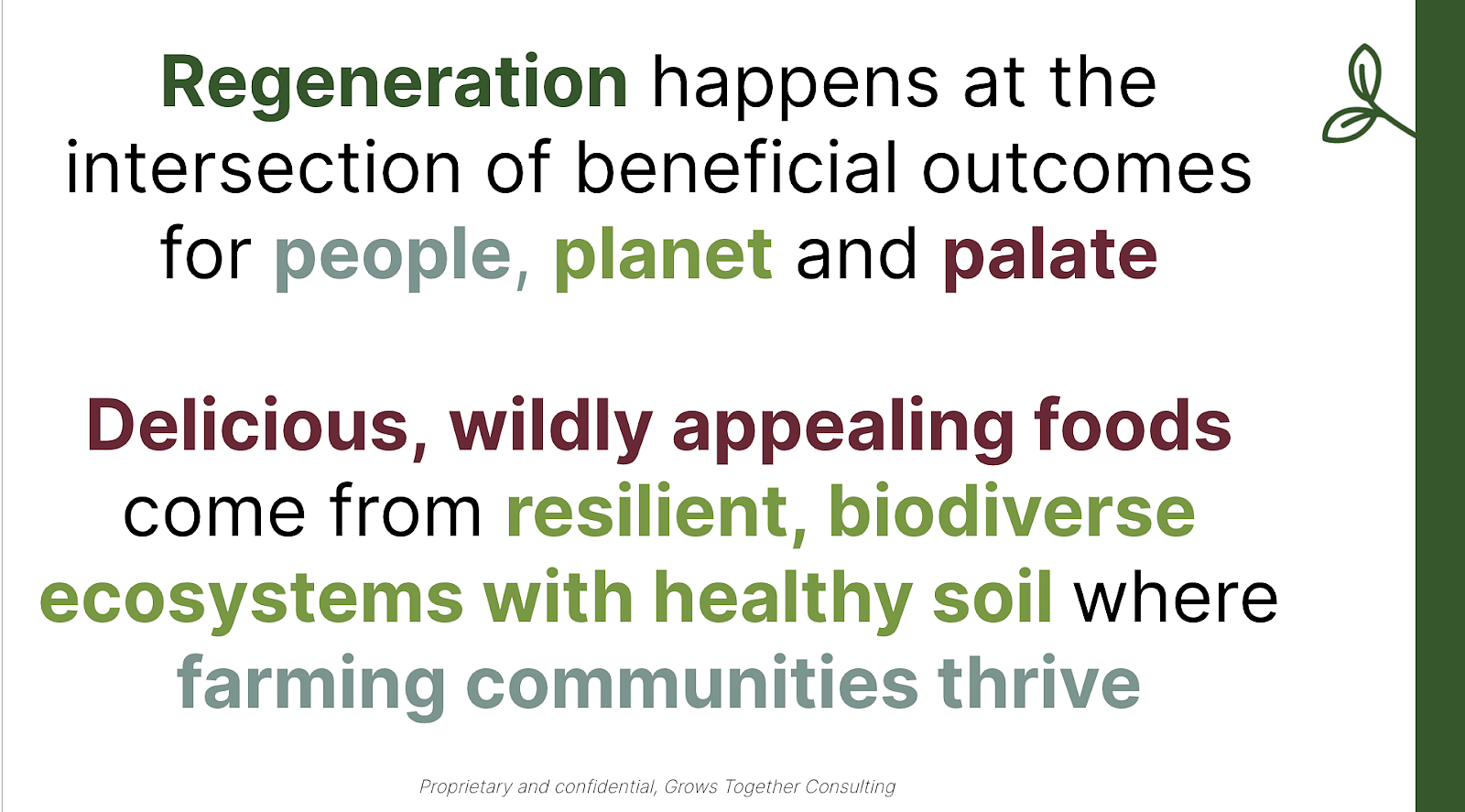
Our Imperative To Rethink Innovation
The challenges Carver faced have never been more relevant. Are you familiar with the term “polycrisis”? Because it’s being used to talk about the world right now.
The viability of our agricultural systems is collapsing as topsoil erodes and soil health depletes. Biodiversity is declining at alarming rates with agriculture being the largest cause of said declines. The nutrient density of our food has dropped significantly in the past 50 years, and our population has never been more chronically ill.
All the while it seems like we can’t get anyone to agree on solutions for just one of these challenges, let alone all of them.
Rather than looking at these crises separately, I propose we look for solutions that lift all stakeholders. The beneficial outcomes to people and the planet are not at odds with each other; they are interconnected and reinforce each other. By growing food in a way that heals the planet and cares for farmers, we will see agricultural communities thrive and nutrient density increase. By introducing this food to more consumers, we will shift taste preferences and improve health outcomes.
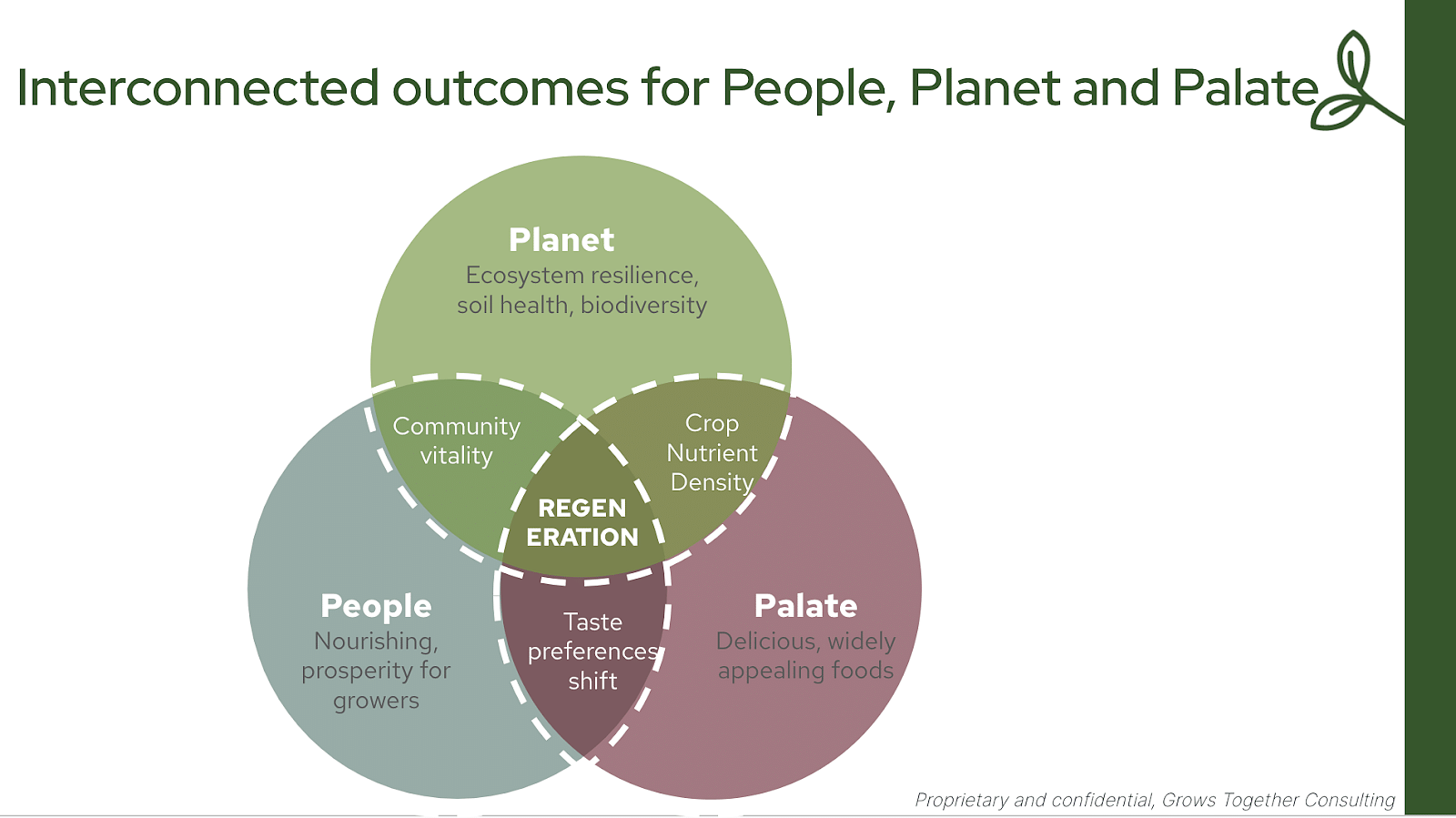
Innovation Moves Markets
Carver responded to a market problem with a market solution, and we need to do the same.
Innovation is an overused word. Its definition varies depending on the audience and context. Loosely defined across all disciplines, innovation is a process of creating things that do not already exist. In the context of food and beverage focused Consumer Packaged Goods (CPG) companies, "innovation" is a process that includes ideation, product development, and the commercialization of new items. Innovation could also include strategic planning to hit growth targets and bring in new customers.
Simply put, if you’re working on “innovation” at a brand, it’s your job to help the business create new offerings (products, flavors, or package sizes) that spur profitable growth; however, it’s not necessarily your job to consider the environmental and social impacts of said innovations.
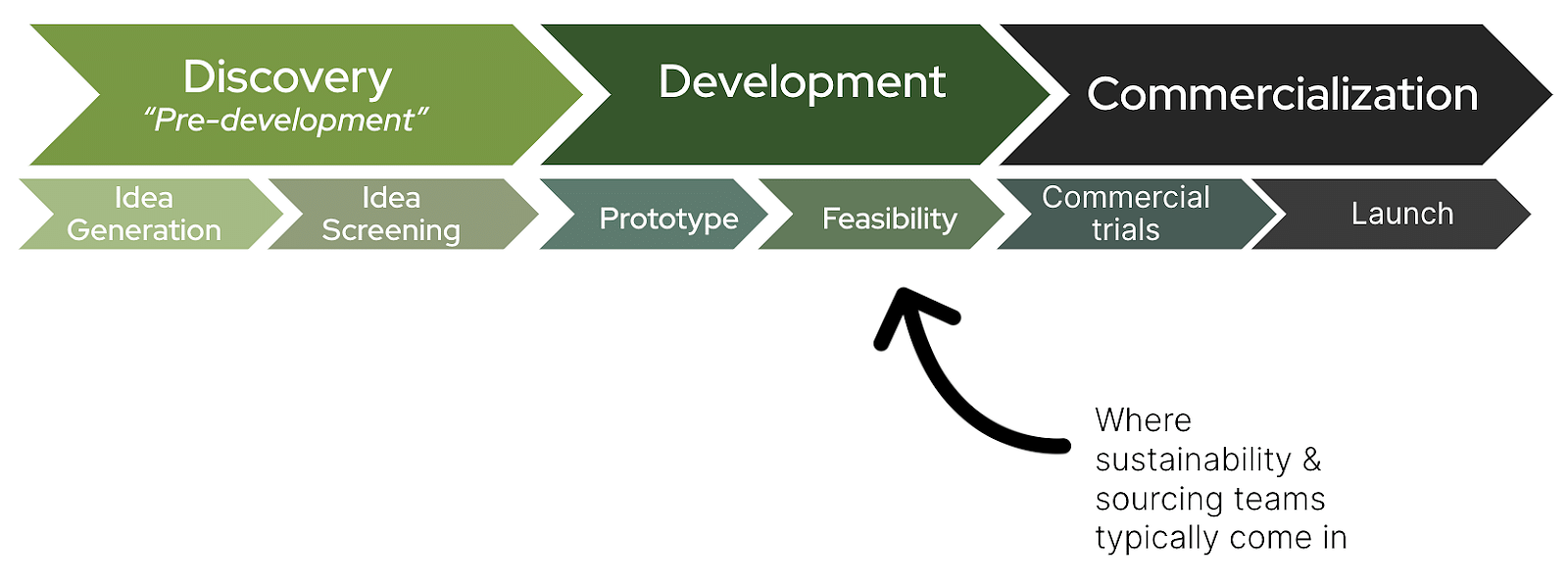
According to a Hartman Group Report, 82% of consumers are familiar with the term “sustainability,” yet less than 25% can name a sustainable brand or product. Brands can bridge this gap by introducing innovative new products that not only spur growth but also make an inherent and positive environmental impact by design.
Innovation is hard. Creating truly unique products that address a consumer need and positively impact the world is nearly impossible. Which makes it no surprise that there are 30,000 new CPG products introduced every year and 95% of them fail. And most of those aren’t even designed to make an environmental impact!
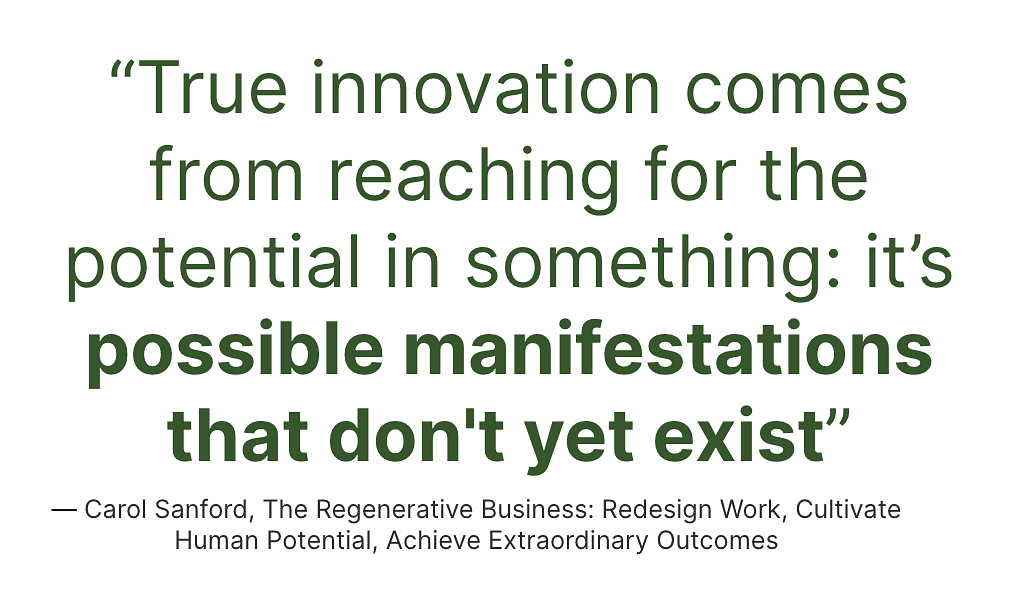
Creating A Positive Feedback Loop
A typical grocery store may carry between 15,000 and 60,000 SKUs. Yet by a conservative estimate, less than 3% of those products in the market today are increasing demand for regenerative agriculture. By considering people, planet, and palate as critical elements of innovation, new products can send a demand signal to farmers to increase supply and bring consumers along in the journey.
The positive feedback loop goes something like this: First, farmers adopt regenerative agriculture practices, growing supply of raw materials (1), next pioneering food companies innovate to create delicious, widely appealing foods (2), the increased product in the market leads to an increase in consumer awareness and demand (3) which in turn allows for innovation to accelerate. As more companies respond, innovation becomes easier, and greater demand signals are sent to farmers (4) to grow more crops in this way, thus the process begins all over again.
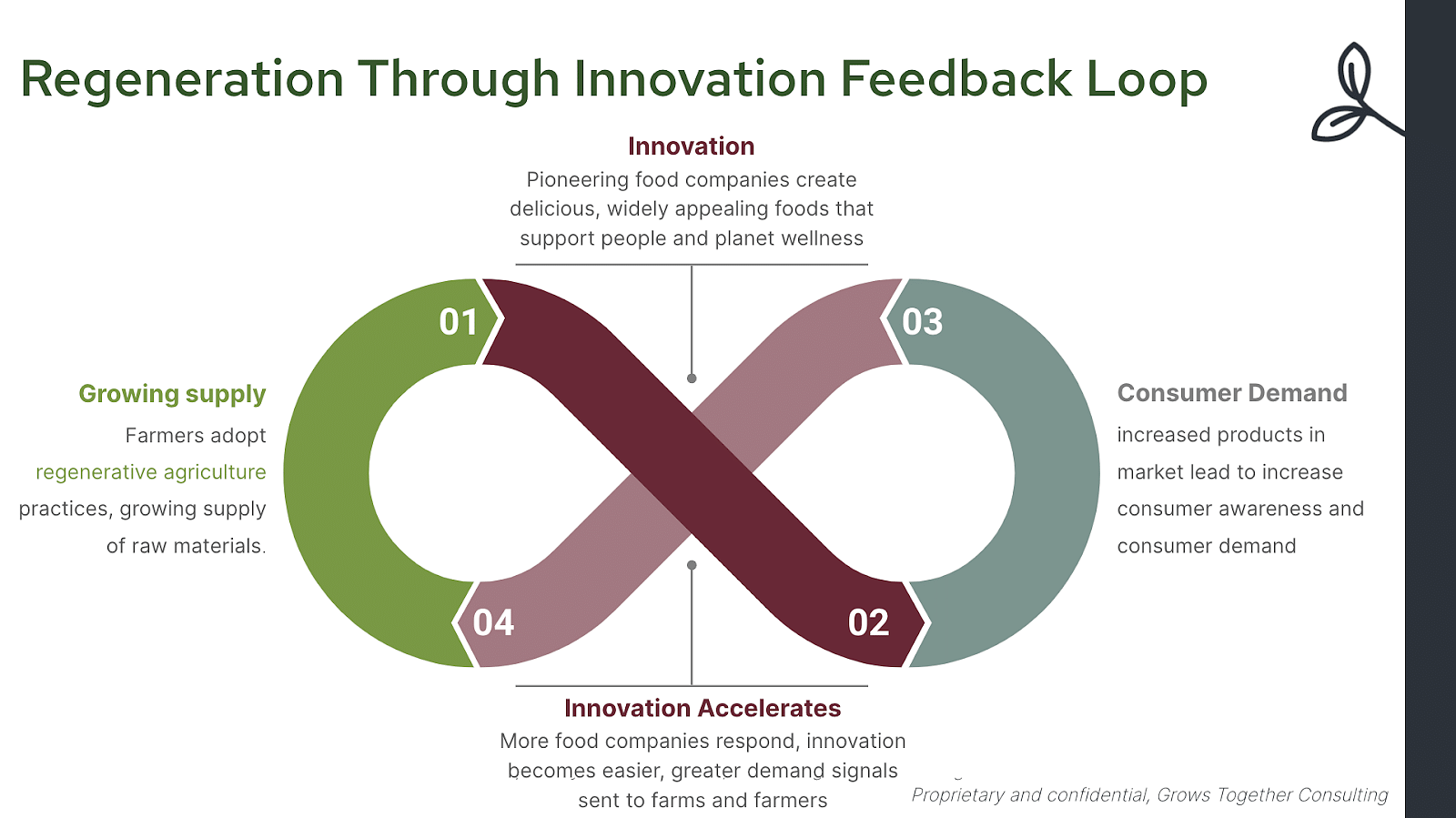
We are all part of this interdependent food web and have arrived at an inflection point where radical action is needed. Every choice each one of us makes sends a message. Whether you are a farmer, entrepreneur, investor, innovation manager, or eater, you can be part of Regeneration Through Innovation.
I’m Alisa Knapp 👋, Founder and CEO of Grows Together Consulting - Cultivating regenerative outcomes through food design, innovation and strategy. I offer bespoke, full-cycle innovation support for mission-oriented brands of all sizes.
Interested in Partnering and Growing Together? You can reach me at alisa@growstogether.com. Check out some examples of my work here.
Editor's Note: The views expressed in this article are the author's alone and do not necessarily represent those of the ReGen Brands platform or team.
